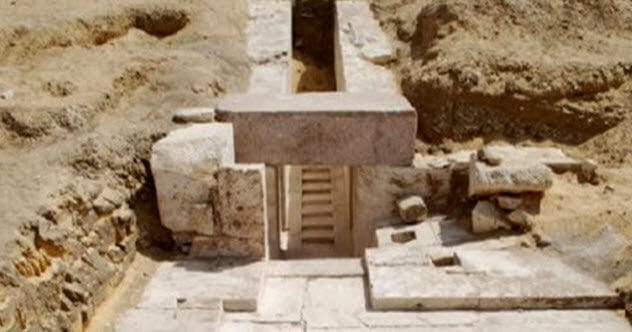Egypt’s ancient dunes continue to yield amazing discoveries that excite historians and archaeology enthusiasts. Although it’s hard to top the Giza pyramids, new ruins and tombs offer exciting insights into Egypt’s rich past. Even modern locations such as Cairo’s museum and some unexpected places continue to unearth historic gems. Let’s explore ten recent discoveries that have changed our understanding of this ancient civilization.
10 Bonaparte’s Weapons
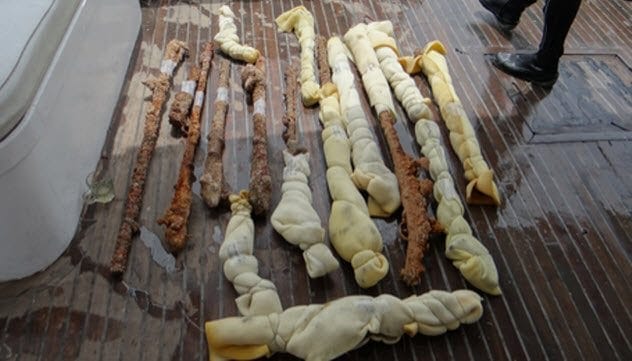
Napoleon Bonaparte’s invasion of Egypt in 1798 marked a significant historical moment. He landed in Alexandria with over 100 warships, seeking to control the land of the Pharaohs. Although initially successful against the British, Napoleon’s ambitions led him to attempt a coup in France, resulting in the English seizing Egypt.
In 2014, Russian divers near Pharos Island (once home to a 117-meter-tall lighthouse) discovered 18th-century guns, pistols, and cannons belonging to Bonaparte’s men. These artifacts likely belonged to the crew of the French vessel Le Patriot, which was defeated by the British in Alexandria.
9 The Unexpected Pyramid
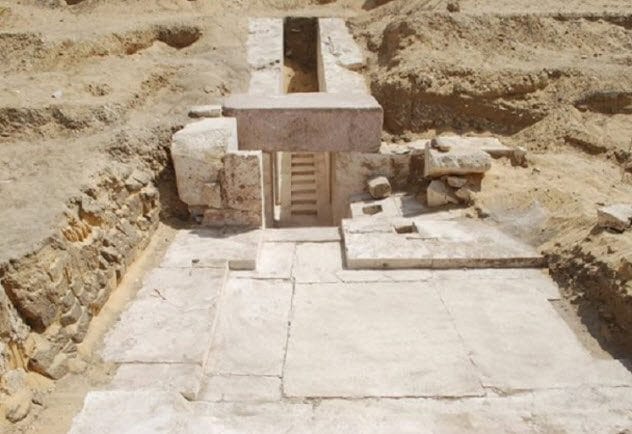
In the Dahshur necropolis, south of Cairo, an unexpected pyramid emerged. Initially mistaken for an early tomb, a 2017 reexamination revealed it as a pyramid built about 3,700 years ago. The structure included rooms, alabaster paving blocks, and a stone corridor.
This new pyramid, located near the Bent Pyramid of King Snefru (circa 2600 BC), dates back to the 13th dynasty. It was likely intended as a final resting place for a high-ranking individual, further emphasizing the importance of the Nile’s west bank as a royal burial site.
8 The Thousand Statues
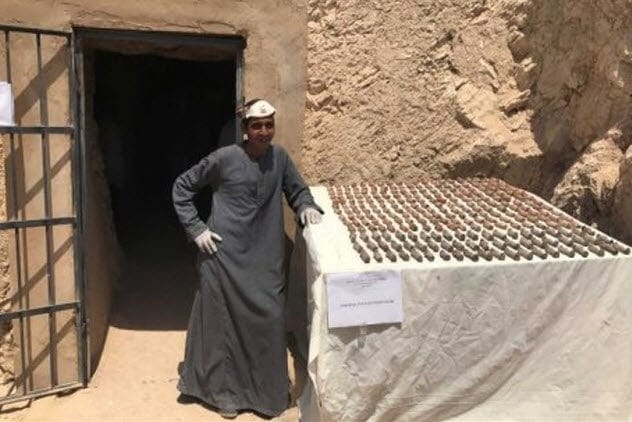
In Luxor’s Dra Abu-el Naga site, another tomb discovery occurred. Opened in 2017, the tomb belonged to Userhat, a judge who lived 3,000 years ago during the New Kingdom era (1500–1000 BC). The tomb complex featured an open courtyard connected to several halls, housing coffins and sarcophagi.
Inside, archaeologists found an army of over 1,000 small statues representing kings from multiple dynasties, along with a wooden mask and sarcophagus lid handle. This discovery offers a deep insight into the noble and royal artifacts of ancient Egypt.
7 A New Necropolis
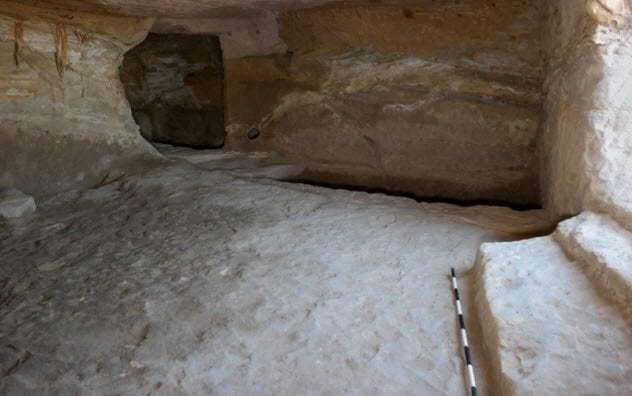
The discovery of a new necropolis in Gebel el Silsila in 2016 changed the area’s understood history. Previously thought to be just a quarry camp, the presence of a shrine and 42 tombs indicated a flourishing community with commerce, religion, and families.
Despite finding the necropolis, statues, quarry, and stelae, the ruins of residential homes remained elusive. The tombs, discovered while reversing flood damage, suggest that the site was reserved for elites, with statues depicting important families from 1543–1189 BC.
6 The Bird Dancers
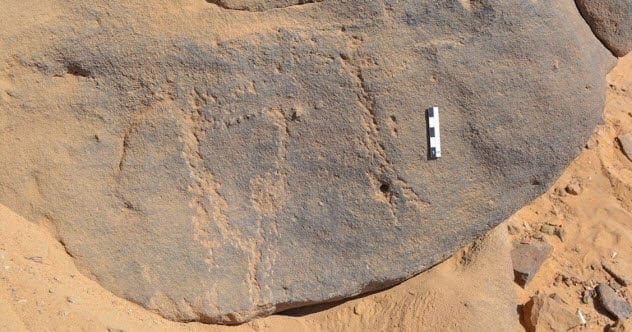
In 2015, rock art at Qubbet el-Hawa, near Aswan, was named one of Egypt’s top archaeological finds. Dating back to the fourth millennium BC, these carvings predate the pharaohs, offering a glimpse into the Neolithic Nile culture.
The art uniquely uses tiny dots to form the outlines of dancers and hunters. One notable figure is a dancer wearing a bird mask, potentially creating the connection between the Neolithic culture and ancient Egyptian society. Similar masks and paintings have also been found in Hierakonpolis, further supporting this link.
5 Meteoric Jewelry
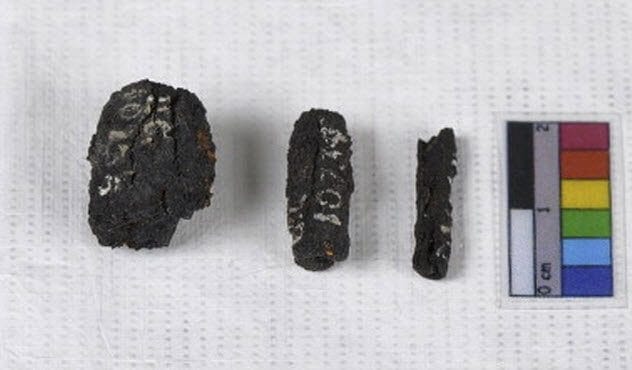
In northern Egypt, nine metal beads from a Gerzeh burial ground have been identified as the oldest iron artifacts in the world. Dating back to 3200 BC, these beads were made from meteorite iron, hammered into thin sheets, and rolled into shape.
These beads were highly prized, with four strung on a necklace alongside precious minerals like gold, carnelian, agate, and lapis lazuli. The discovery indicates that communities possessed advanced smelting skills, even as early as the fourth millennium BC.
4 The Third Kingdom
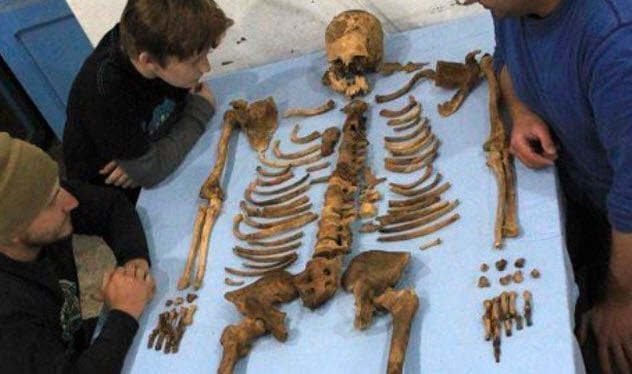
In 2014, archaeologists excavating a site in Abydos uncovered the tomb of King Senebkay, dating back 3,600 years. This discovery confirmed the existence of a previously theorized dynasty from that era, challenging the belief that Egypt had only two kingdoms before unification.
Senebkay’s dynasty, ruling around 1600 BC, controlled a central territory between the northern and southern kingdoms. The role of this kingdom remains unclear, but the find opens up new avenues for exploring ancient Egypt’s political landscape.
3 Plague Of Cyprian
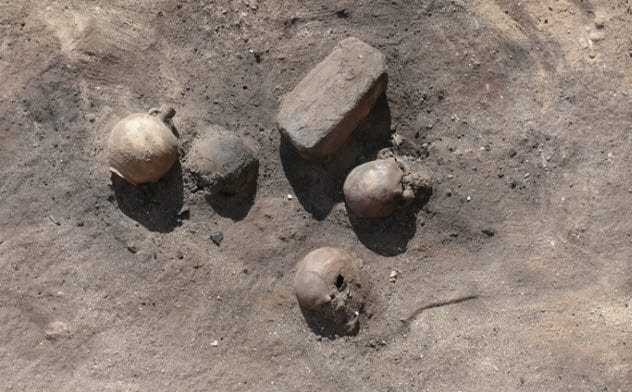
During excavations in Luxor from 1997–2012, a grisly discovery was made at the funerary complex of Harwa and Akhimenru. The team found a human disposal site, including kilns used to produce lime (an ancient disinfectant) and the remains of a bonfire with skeletons.
These remains were linked to the Plague of Cyprian, which devastated the Roman Empire in the third century AD. The victims, who died so rapidly that they didn’t receive proper burial rites, likely succumbed to measles or smallpox.
2 The Cairo Manuscript
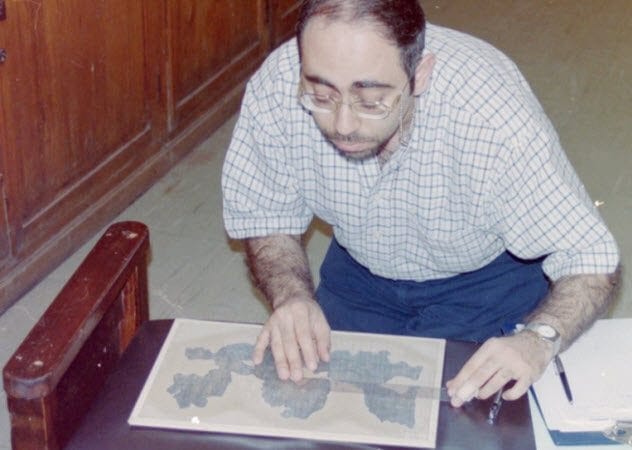
A 4,000-year-old leather manuscript was rediscovered in the Egyptian Museum in Cairo in 2015. The manuscript, purchased by the French Institute for Oriental Archaeology after World War I, had been forgotten in storage.
The restored manuscript revealed religious spells and vivid images of sacred creatures. Dating to between 2300–2000 BC, the Cairo scroll predates the Book of the Dead and provides specifics on accessing a sacred site guarded by magical beings.
1 Slum Statues
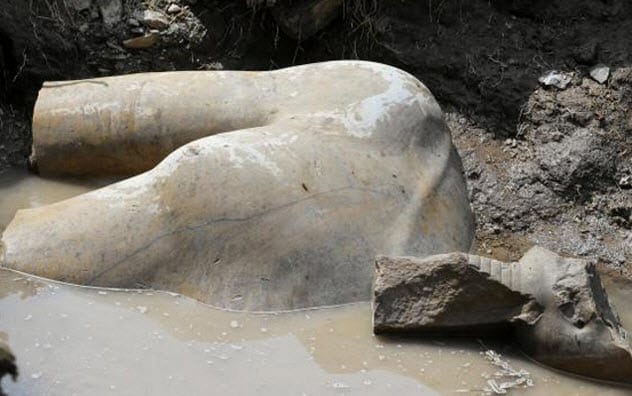
In 2017, two statues were unearthed in a Cairo slum: a life-size man (identified as Pharaoh Seti II) and a breathtaking 8-meter colossus. The giant statue, found submerged in groundwater, is believed to potentially represent Pharaoh Ramses II.
The statues were found in Matariya, where ancient Egyptians believed the Sun god created the Earth. These discoveries are praised as some of Egypt’s most important, and they emphasize the ongoing significance of modern excavation sites.
These recent discoveries showcase that Egypt’s ancient sands still hold many secrets, continually reshaping our understanding of its rich history. From lost kingdoms to forgotten manuscripts, each new find adds fascinating layers to the story of ancient Egypt.
What do you find most fascinating about these discoveries? Leave your comment below!


